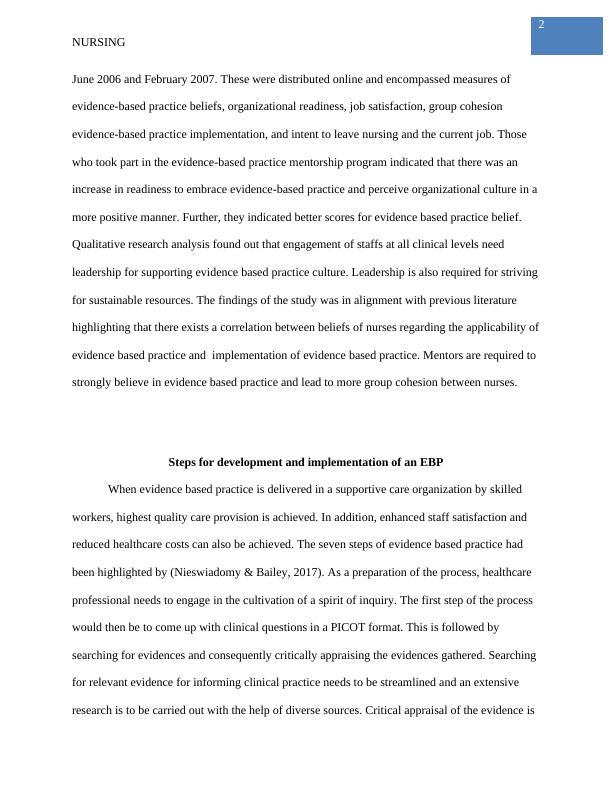Implementing Evidence-Based Practice: Effectiveness of a Structured Multifaceted Mentorship Programme
6 Pages1427 Words210 Views
Added on 2023-06-11
About This Document
This paper aims to guide EBP on the basis of the research article titled “Implementing evidence-based practice: effectiveness of a structured multifaceted mentorship programme” by Wallen et al., (2010). The study considered carrying out three focused discussions for collecting data from nursing leadership and shared governance staff. In addition, pre- and post-intervention questionnaires were used for data collection between the time frame of June 2006 and February 2007.
Implementing Evidence-Based Practice: Effectiveness of a Structured Multifaceted Mentorship Programme
Added on 2023-06-11
ShareRelated Documents
End of preview
Want to access all the pages? Upload your documents or become a member.
Reasons why Nurses should be at the Forefront in Implementing EBP
|8
|2303
|145
IMPLEMENTING EBP PROJECTS.
|3
|473
|119
The Evidence Based Practice
|12
|2857
|20
Challenges and Strategies for Implementing Evidence Based Practice in an Emergency Department
|19
|2957
|3
NRSG367: Transition to Professional Nursing
|6
|1467
|103
Nursing Intervention Assignment 2022
|9
|2319
|12



